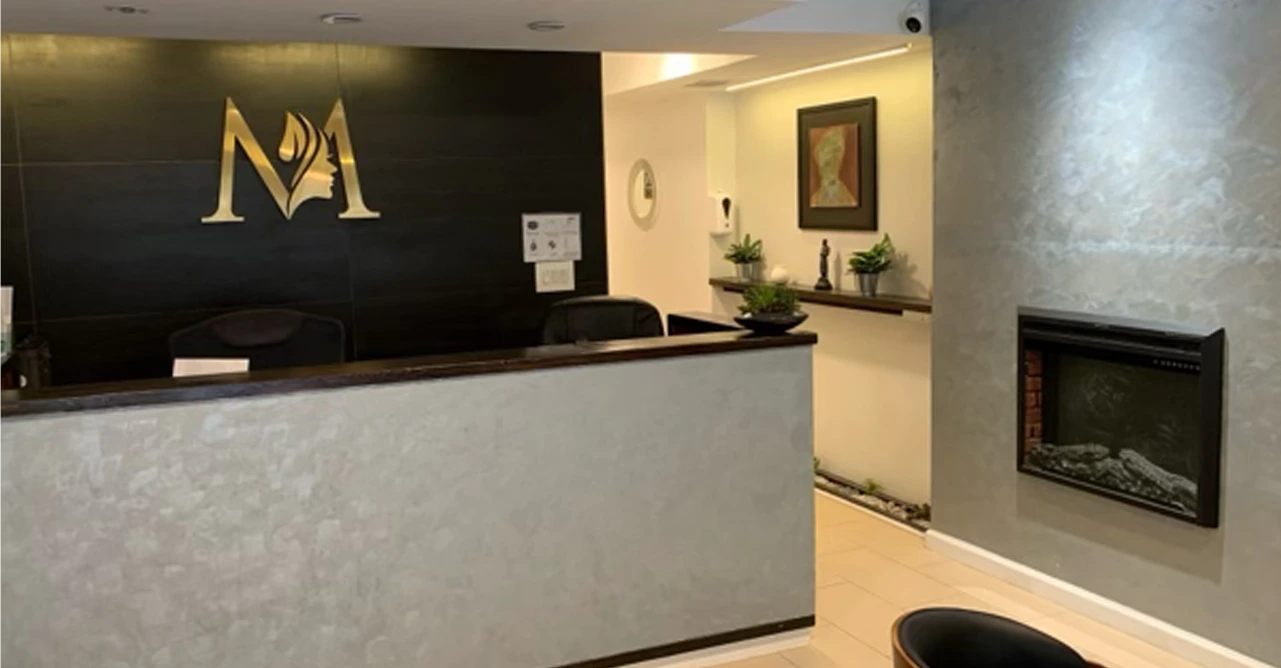Murray Hill Plastic Surgery & Vein Center, located in NYC, offers septoplasty to correct deviated septums and improve breathing. During this outpatient surgery, Dr. Sabry expertly manipulates and reconstructs the wall between the nostrils to open airways obstructed by bone and cartilage displacement. Realigning or removing portions of the crooked septum increases airflow, allowing people to breathe freely. Dr. Sabry’s precision, experience, and commitment to patient satisfaction result in top-notch care. Our treatments improve sleep quality and help people feel more comfortable.
Murray Hill Plastic Surgery & Vein Center, located in NYC, offers septoplasty to correct deviated septums and improve breathing. During this outpatient surgery, Dr. Sabry expertly manipulates and reconstructs the wall between the nostrils to open airways obstructed by bone and cartilage displacement. Realigning or removing portions of the crooked septum increases airflow, allowing people to breathe freely. Dr. Sabry’s precision, experience, and commitment to patient satisfaction result in top-notch care. Our treatments improve sleep quality and help people feel more comfortable.
Septoplasty is a surgical procedure that corrects a deviated septum, the wall between the nostrils that divides the nasal cavity into two parts. The septum is composed of bone and cartilage, and when it bends to one side, it can obstruct breathing. In septoplasty surgery, the deviated portions of the septum are repositioned or removed entirely to allow for better airflow through the nasal passages. This procedure typically takes between 1-2 hours to perform under general anesthesia. It involves making incisions to access the septum and then manipulating or removing the deviated cartilage and bone.

Initially, the patient consults Dr. Sabry to determine whether septoplasty is appropriate in their case. During the appointment, our doctor performs a physical exam of the nasal passages and reviews the patient’s symptoms, medical history, and goals for surgery. Dr. Sabry also explains the procedure in detail. A septoplasty may be recommended if the deviated septum is causing nasal blockage, breathing impairments, recurrent sinus infections, sleep disturbances, or other issues.
The patient is brought into the operating room and positioned comfortably. The nose area is cleaned and prepped for the septoplasty procedure.
General anesthesia is provided intravenously to put the patient into a pain-free, unconscious state for the duration of the surgery. This allows Dr. Sabry to operate inside the nasal passages without causing discomfort.
Dr. Sabry makes an incision in the internal lining of the nose. This allows access to manipulate and restructure the nasal septum. The incision is made as small as possible to minimize trauma.
The deviated portions of the septum are repositioned, trimmed, and restructured into midline. This straightens the nasal wall and opens airflow. Any ridges or spurs are corrected. Portions of the septum may be resected (cut out) if needed.
Small splints are placed inside the nose to support the newly straightened shape during initial healing. Dr. Sabry can use dissolvable internal splints to ensure maximum patient comfort.
Once the septum is sufficiently stabilized, the soft lining inside the nose (mucosal flap) is laid back over the septum. Dissolvable sutures close the internal incision.

The most common reason for septoplasty is a deviated septum. This condition is characterized by a displacement of the wall between the two nasal passages, causing one of them to be smaller. This often leads to breathing difficulties, chronic sinusitis, nosebleeds, and frequent infections. Septoplasty is commonly recommended for people with a severely deviated septum that is causing significant symptoms.
Patients who suffer from significant obstruction or blockage are candidates for septoplasty. This condition may be caused by a deviated septum, nasal polyps, or swollen turbinates. Septoplasty can open up the two nasal cavities and improve breathing. Before surgery is recommended, patients usually undergo an endoscopy to determine if a deviated septum or other anatomical problem is causing the obstruction.
Individuals who experience acute or chronic sinus infections may be candidates for septoplasty. A crooked septum can obstruct sinus drainage passages, making it harder to remove mucus. This creates an environment prone to bacterial growth and repeated infections. Septoplasty can help correct abnormalities and open drainage pathways to reduce future infections.
In some cases, a traumatic injury to the nose may cause a deviated septum or other damage that obstructs nasal breathing. Examples include sports or motor vehicle accidents. If non-surgical treatments are ineffective at relieving symptoms, septoplasty can be an option to repair traumatic damage and restore the normal functioning of the nose.

Septoplasty helps improve breathing by straightening the septum to allow for better airflow through the nasal passages. Patients can significantly improve their quality of life by avoiding the discomfort and stress associated with congestion in the nose.
A deviated septum may obstruct the sinus drainage pathways, leading to more frequent sinus infections. During septoplasty surgery, the crooked portions are repositioned, allowing proper mucus removal. This helps prevent mucus buildup and sinus infections.
Difficulty breathing through a blocked nasal airway can disrupt sleep and cause chronic fatigue. After septoplasty surgery, improved airflow capacity at night allows patients to enjoy deeper, more restorative rest.
The cost of septoplasty in NYC ranges from $5,000 to $15,000. The wide range in price depends on factors like the surgeon's fees, hospital or facility charges, and anesthesia expenses. On average, most people can expect to pay nearly $10,000 for septoplasty when performed by an experienced ear, nose, and throat (ENT) surgeon like Dr. Sabry.
During the initial consultation at our office, patients receive accurate price quotes and discuss all financial questions. We also offer credit plans to help budget for the nasal surgery.
Murray Hill Plastic Surgery & Vein Center is an out-of-network provider for most insurance plans. Our knowledgeable staff is happy to help you navigate your benefits and see what portion of the septoplasty costs your plan will cover. We will verify all details so you know what to expect when paying out-of-pocket. Our team will help you make an informed decision.
Even if your insurance offers little or no out-of-network coverage, we work hard to make septoplasty affordable. Murray Hill Plastic Surgery & Vein Center offers flexible payment plans and pricing to fit most budgets. We support patients every step of the way, answering questions, explaining costs, and easing any concerns.



